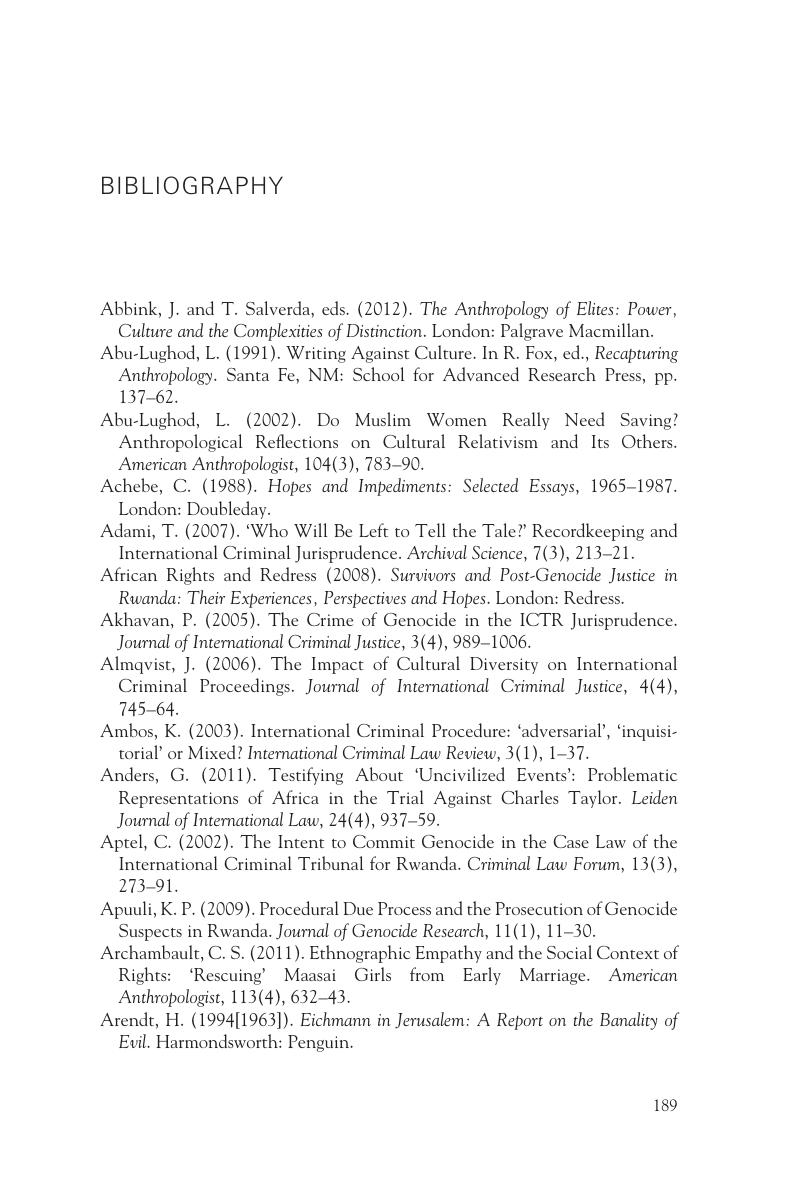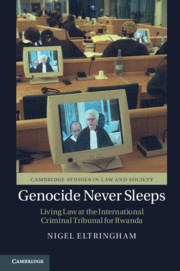Book contents
- Genocide Never Sleeps
- Cambridge Studies in Law and Society
- Genocide Never Sleeps
- Copyright page
- Contents
- Figures
- Acknowledgements
- Introduction: Judging the Crime of Crimes
- 1 ‘When We Walk Out; What Was It All About?’
- 2 ‘Watching the Fish in the Goldfish Bowl’
- 3 ‘Who the Hell Cares How Things Are Done in the Old Country’
- 4 ‘They Don’t Say What They Mean or Mean What They Say’
- 5 ‘We Are not a Truth Commission’
- Conclusion
- Bibliography
- Index
- Cambridge Studies in Law and Society
- References
Bibliography
Published online by Cambridge University Press: 03 September 2019
- Genocide Never Sleeps
- Cambridge Studies in Law and Society
- Genocide Never Sleeps
- Copyright page
- Contents
- Figures
- Acknowledgements
- Introduction: Judging the Crime of Crimes
- 1 ‘When We Walk Out; What Was It All About?’
- 2 ‘Watching the Fish in the Goldfish Bowl’
- 3 ‘Who the Hell Cares How Things Are Done in the Old Country’
- 4 ‘They Don’t Say What They Mean or Mean What They Say’
- 5 ‘We Are not a Truth Commission’
- Conclusion
- Bibliography
- Index
- Cambridge Studies in Law and Society
- References
Summary

- Type
- Chapter
- Information
- Genocide Never SleepsLiving Law at the International Criminal Tribunal for Rwanda, pp. 189 - 215Publisher: Cambridge University PressPrint publication year: 2019

